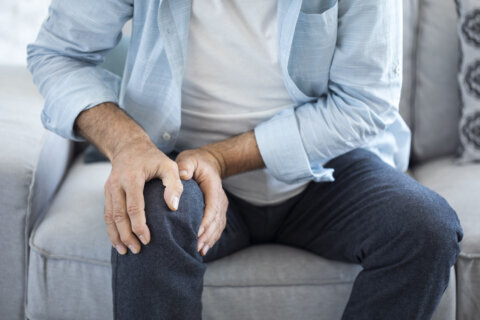This content is sponsored by MedStar Washington Hospital Center.
Acne plagued many of us in our teen years, yet there was light at the end of the tunnel when we were told we would grow out of it as we got older. Unfortunately, that’s not the case for everyone.
Those pesky pimples, blemishes, whiteheads and cysts impact many people in their 20s, 30s and 40s. One study found that 85 percent of females and 15 percent of males have adult acne. However, there are options for adults who are not satisfied with how their skin looks, said Dr. Sanna Ronkainen, a dermatologist at MedStar Washington Hospital Center.
Acne typically occurs when hair follicles (tiny sacs from which hair grows, also called pores) become clogged by oil and dead skin cells. Acne usually appears on the face, chest, back and shoulders. Sometimes folliculitis — a common skin condition in which hair follicles become inflamed — can cause acne on the buttocks and thighs.
“We see a variety of different reasons that adults get acne,” Dr. Ronkainen said.
One of the more common reasons, especially among females, is hormones. Changes in hormone levels during menstrual periods, pregnancy, perimenopause and menopause can lead to acne breakouts. Stress, family history and medications can result in acne as well, Dr. Ronkainen said.
“There are a lot of over-the-counter options for acne and many different ingredients patients can experiment with,” Dr. Ronkainen said of treating acne. For example, benzoyl peroxide is a classic treatment for acne that targets the bacteria that grows on the skin. There’s also salicylic acid, which helps prevent pores from becoming clogged. Glycolic acid and sulfur can help exfoliate the skin as well.
These products can be coupled with prescription products to give patients the best possible outcome, Dr. Ronkainen said.
Many of Dr. Ronkainen’s patients may want immediate results, but she urges them to be understanding of how long it can take for acne to resolve.
“Acne can be really frustrating to treat. When patients are coming in to see me, they want results pretty quick and it’s frustrating to tell them it takes up to three months to really see if a new acne regimen is going to work for them,” she said. “I usually tell people that we should start seeing some improvement by the first month, but really by three months we should know if this treatment regimen is really working for them or if we need to change it up a little bit.”
As far as prevention goes, it’s important to be mindful of what you put on your skin every day, Dr. Ronkainen said. She suggests choosing non comedogenic products, meaning those that do not block pores. There are also over-the-counter cleansers and topical treatments that can be used at home as part of your daily regimen.
One common question Dr. Ronkainen gets is about the role diet plays in acne. There is one study that shows a correlation between skim milk and an increased development of acne, however, it’s unclear why that is.
And as tempting as it is to pop pimples, Dr. Ronkainen says to avoid it. Doing so can break the skin, causing inflammation and scarring in the long run.
So when should you see a dermatologist if you have adult acne?
“If a patient is not satisfied with how their skin is looking at home, a visit to a dermatologist is an easy choice,” Dr. Ronkainen said. “We can always talk you through what you’re using as your home regimen, tweak that as well as add in prescription-strength products.”
And if you’re on the fence, a consultation can’t hurt, she adds. The dermatologists at MedStar Washington Hospital Center work with their patients to figure out what works best for them, Dr. Ronkainen said.
“Our dermatologists have a wide breadth of experience treating acne and all types of skin cancer in patients of all ages.”
Read more and listen to a podcast about adult acne with Dr. Ronkainen here.







